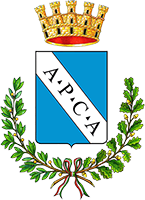
During the Medieval times, due to its strategic position as an outpost in the Amelia’s Hills, the stronghold of Foce was continuously threated by the towns of Amelia, Narni and Todi who wanted it for themselves. Some historical sources state that the castle was founded by a colony of Corsicans who had fled from their island due to Saracen invasions. Ancient documents refer to it as Castrum Focis and the earliest reports of the castle date from the 12th century. Foce is situated on a hill surrounded by thick woodland, and it stood out for centuries above the ancient road that led to Amelia from the Bridge of Augustus in Narni. Early subjugated by Amelia’s control, when Frederick II besieged the city (1240), Foce was occupied by Narni, which forced the villagers to swear allegiance and to pay a twenty-six denars tax on house chimneys, called fuocatico. When Pope Alexander IV directly interceded in 1256, the stronghold village was given back to Amelia. However, Narni did not give up and in 1282 tried everything in its power to reconquer this important spot but it failed. Repeated attempts by the Focians to gain autonomy from the Municipality of Amelia, induced the Amelian army to occupy the castle in 1336, setting it on fire. This event did not stop the inhabitants of Foce, who managed to obtain its own State, just like any other free City-state, in 1376. The Statute is now housed in Amelia’s Historical Archive, and it is a particularly interesting juridical document regulating different social and economic aspects of life in the Medieval Age. However, this period of autonomy did not last for long. According to historian Monsignor Di Tommaso, in 1376 the castle was ceded by the Holy See in third generation emphyteusis (perpetual lease) to a nobleman from Perugia.
In 1434, a Decree issued by the Amelian Council of Elders, ordered Foce to be destroyed, as it provoked Amelia, trying several times to occupy the fortress of Fornole. Just three years after this event, Pope Eugene IV granted the Focians the right to rebuild both their houses and the village walls and he also exempted them from paying any taxes for twenty-five years. 1451 a Papal Bill issued by Pope Niccolò IV reconfirmed the dependency of the city and decided to send there four Amelian noblemen to supervise the rebuilding of the ruined fort and the strengthening of the walls. Only some sections of the ancient castle’s walls remain. In the village centre, the ancient town gate and the nearby Church of St. Gregory can be visited, the latter built during the 13th century in Romanesque style. The martyr to whom the church is dedicated is also the patron saint of Foce. The church façade has some carved low-relief symbols of the Evangelists and two beautiful columns with refined capitals in front of the doorway. The rear of the church apse is charmingly decorated with small arches. The interior preserves a relevant painted wooden Crucifix (14th-15th century) probably a production of an Umbrian workshop, a fresco-painting representing The Lady of Mercy (15th century), and, in a niche, St. Sebastian wounded by arrows (16th century). Lower down, in the town’s square, there is a civic well of Medieval origin, renovated in the 17th century, under the pontificate of Urban VIII as documented by the inscription in the upper part of the structure.
Sanctuary of Santa Maria delle Grazie
In 1629, the vicarious Captain Quirino Geraldini was able to rescue a revered image of St. Mary of the Graces (XVII century) and to move it into the nearby Castle. The painting belonged to a country chapel, and it was founded on the banks of the river Beccio. This incredible event induced believers to build a Sanctuary, opened in 1648, where the fresco could be properly kept in a sumptuous baroque ornamental frame. The holy image soon became a destination for pilgrims from all over Italy. In 1719 a Monastery was founded nearby, assigned to the Cistercians Monks. In 1858 upon request by Cardinal Clorelli, the Holy See recognised the incredible happening as being the work of miraculous intervention. During the disastrous events of the Second World War, the monastery was turned into a hospital. Further to major intervention, the Sanctuary of Foce has been recently restored to its former glory displaying its candid façade scanned by elegant pilasters and ended by a monumental gable. (Text adapted from that of Saverio Ricci)


